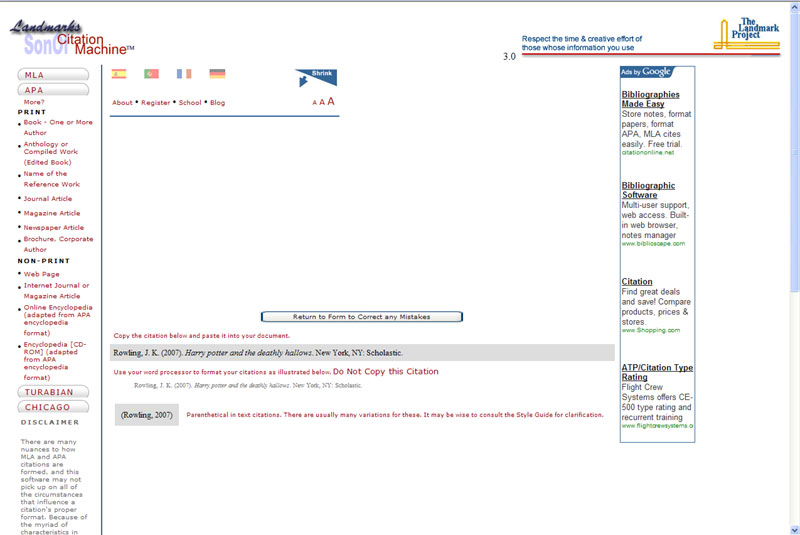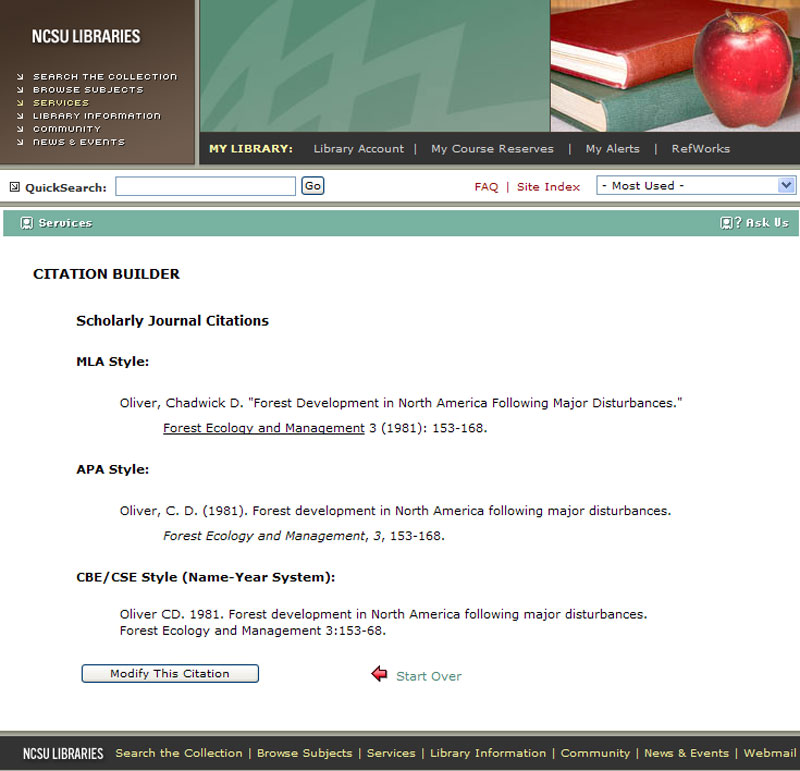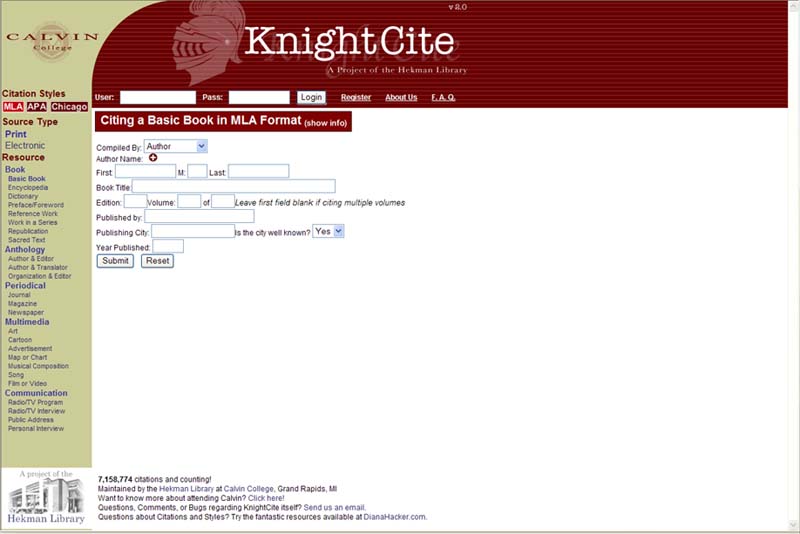 Review of Online Citation Programs: Son of Citation Machine, Citation
Builder, and KnightCite
Review of Online Citation Programs: Son of Citation Machine, Citation
Builder, and KnightCite Review of Online Citation Programs: Son of Citation Machine, Citation
Builder, and KnightCite
Review of Online Citation Programs: Son of Citation Machine, Citation
Builder, and KnightCiteby David Ramsey
Historically, composition instructors have been slow to integrate the use of the Internet in their courses (Selfe, 1999). Increasingly, however, online citation “engines” or “builders” for APA, MLA, Chicago, and Turabian formats are being used by students. In fact, their use is often encouraged by colleges and universities (by offering hyperlinks to the sites or by being directly associated with particular programs, for example); thus, it is imperative for instructors to consider the validity and usefulness of such sites in traditional and online classrooms, if they have not already done so. Discussing and employing citation programs within classroom contexts recognizes the value of the online environment, a domain with which most students—especially younger, traditional students—are comfortable.
Perhaps instructors’ primary concern with such sites is that students will be less able to understand others’ citations (a necessary component of effective research) because a computer program presented elements of an entry in the appropriate place. However, citation builders can provide a different framework for a discussion of more traditional, text-based resources. In this way, the computer technology offered by the citation programs can assist in providing "fertile sites for the creation and cultivation of knowledge within classrooms" (Hawisher and Selfe, 1991, p. 2).
What follows are reviews of three of the most popular online citation programs: Son of Citation Machine, Citation Builder, and KnightCite.
Son of Citation Machine has existed since 2000, and according to the site, underwent “major revisions” in 2004 and 2006. This program is quite simple and straightforward: a user clicks on the preferred citation style and type of source, fills in the appropriate form, and clicks on a button to have the program place the information in the appropriate format. Citation Builder and KnightCite present similar features. Son of Citation Machine differs from the other two programs, however, in that a user clicks on a citation style before being presented with a list of sources; this feature would seemingly be useful for writers who do not wish to be concerned with (or confused by) formats for other citation styles.
One useful aspect of Son of Citation Machine is the fact that it presents in-text citation in addition to a terminal entry, as shown in the following example:

Including both the in-text and the terminal citations should help students to recognize that both types of information are necessary for a particular source.
While the second site reviewed, Citation Builder, does not offer in-text citation for a given source, it does present terminal citations for the three primary formats—APA, MLA, and Chicago—at once:

In contrast to Son of Citation Machine, Cite Builder's presentation allows students to quickly and easily determine differences between the formats and can serve as the springboard for a class discussion regarding the reasons for such differences. A further feature of Citation Builder is that the program initially presents the form filled, which allows users to consider how a terminal entry appears with the proper information inserted.
The final site reviewed, KnightCite, also does not offer in-text citation. However, this citation tool is much more extensive than
the other two sites in reference to detailing multimedia sources, as offered
below:

In this way, KnightCite recognizes the popularity and applicability of such sources in today’s electronic environment.
Finally, it is important to note that all of the sites reviewed have some type of disclaimer, such as the following from Son of Citation Machine: “There are many nuances to how citations are formed, and this software may not pick up all of the circumstances that influence a citation's proper format. Because of the myriad of characteristics in information sources, Neither David Warlick, nor The Landmark Project, can fully guarantee the accuracy of citations generated by this tool” (Warlick, 2006). However, each site also offers information for hard-copy resources or links to electronic resources.
In short, these sites serve as useful complements to, rather than replacements for, traditional citation resources; they should be used--and presented to students--in this way.
References
Hawisher, G. , & Selfe, C. (1991). Evolving perspectives on computers and composition studies: Questions for the 1990s. Urbana: NCTE.
Selfe, C. L. (1999).Technology and literacy: A story about the perils of not paying attention. College Composition and Communication. 50.3, 411-436.
Warlick, D. (2006). Son of citation machine. Retrieved May 5, 2008, Web site: http://citationmachine.net.